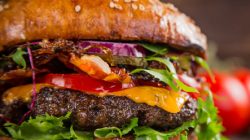The Call For Clean / Clean Label: Part Two
THE CONSUMER’S PERSPECTIVE
We promised a second round of clean but this time we are examining it from the consumer point of view. We set out to uncover what the consumer understands about clean label and how far apart their knowledge might be from the industry’s definition. After that, we take a look how consumers from different age groups feel about clean label claims.
It is important to understand first what consumers are hoping to avoid when they are dedicated to clean eating. The top clean label issues that concern consumers pertain to what is in their food instead of what isn’t. GMO’s, preservatives, artificial ingredients and sugar top the list followed by how foods are sourced and produced.1 In December 2015, a global study on clean label was conducted with consumers across 31 countries. On average, 36% of these consumers believe a clean label means a product doesn’t contain artificial ingredients, 34% think it means natural or organic and 34% just plain don’t know.2 And in the U.S., 45% of the consumers surveyed are unsure of what clean label means, which is ironic considering that the U.S. seems to be further ahead down the trend track in this area. With 20% of products in 2015 making clean label claims and more expected to follow, it’s apparent the two sides need to get on the same page.3
The Marketing Challenge
There is obvious disparity between what clean means in the industry vs. what it means to the consumer. Manufacturers that find a way to communicate their clean label in a way that resonates with the consumer without being too technical will win the day. Caribou Coffee has done this very successfully. The coffee brand’s recent “clean pledge” highlights their removal of artificial flavorings from their coffee creations but their corresponding marketing campaign adds another, more emotional layer, sharing messages like “it just got real” and “change you can taste.”
Different Ages, Differing Perceptions
While all consumers care about what is in their food, it is the Boomers who are most interested in “clean label.” Boomers as a category generally have more disposable time and money to dedicate to researching “clean” products. Boomers want to avoid additives or artificial ingredients and 76% do so out of concern for their health. Sixty-nine percent of Millennials, on the other hand, are more focused on seeking organic or natural ingredients that they recognize compared to 56% of Boomers.4 Clearly, both groups want clean but have different drivers and need to be marketed to differently.
Clean Ruling
In Vermont, new legislation is being proposed that could have a trickle-down effect for food labeling across the U.S if it isn’t stopped. Passed in 2014 and effective July 1, 2016, Act 120 calls for mandatory labeling of foods made with genetically engineered ingredients using the phrases: “partially produced with genetic engineering,” “may be produced with genetic engineering,” or “produced with genetic engineering.5 It’s interesting to note that companies do not have to specify which ingredient is genetically engineered but risk fines up to $1000 per day per product if not compliant.
Clean Goes Clear
Perhaps the solution to the clean conundrum is to eliminate the word clean all together. Some are calling for clear labeling which speaks to the consumer’s need for transparency and as a term is less ambiguous. The label is, in many cases, the first communication tool that can win a customer and today, the more information, the better. And for Millennials who as a group seek authentic brands with a story and values they identify with, it might be the clear solution.
Working to be as transparent as possible with your consumers? We have clean label ingredients that make it easy to deliver the healthy YUM all groups crave and our technical experts can help you tidy up a label. Contact us today.
Source:
- https://www.npd.com/wps/portal/npd/us/news/press-releases/2015/real-clean-and-fresh-are-the-attributes-consumers-will-look-for-in-the-foods-they-eat-in-2016/
- Food Business News. Gelski, Jeff. Consumers not clear on clean label definition. February 19, 2016
- http://www.foodbev.com/news/clean-label-becoming-industry-standard-study-claims/
- http://www.foodbusinessnews.net/articles/news_home/Consumer_Trends/2015/07/A_boomer_market_for_clean_labe.aspx?ID={8775DA21-7555-4F67-842C-BA79A1196C59
- Mintel: GMO labeling is coming to Vermont and consequently, the rest of the US – April 2016.


